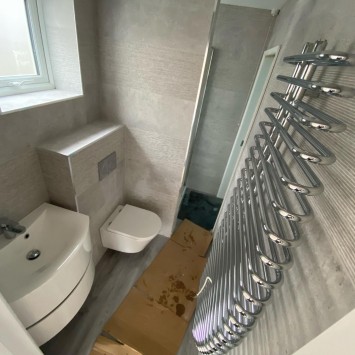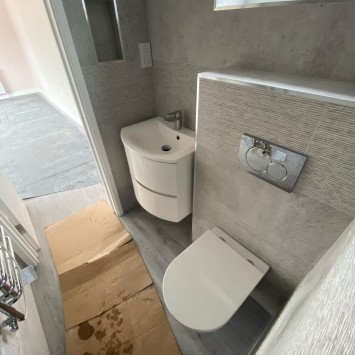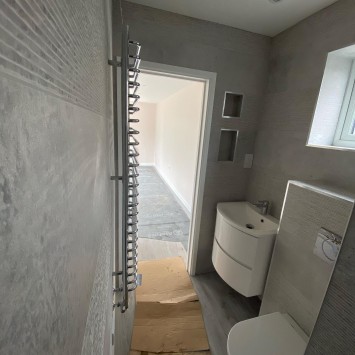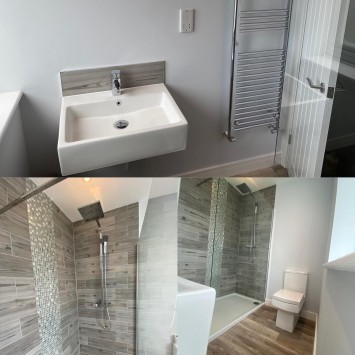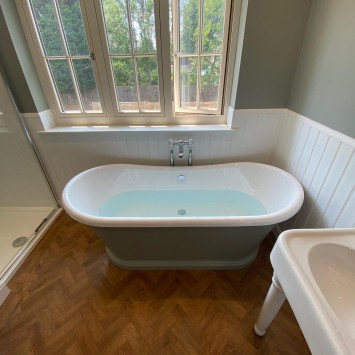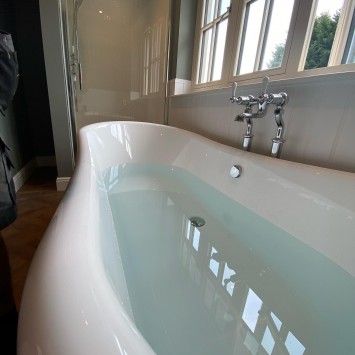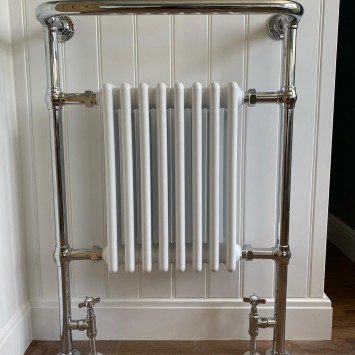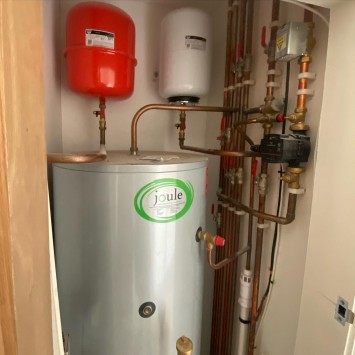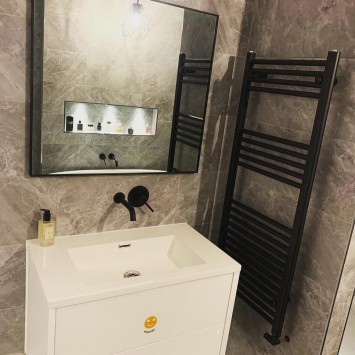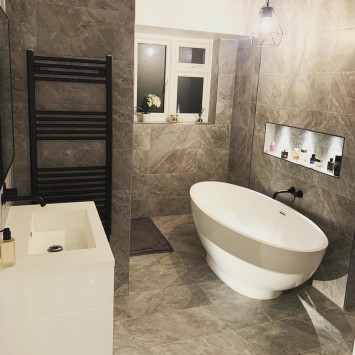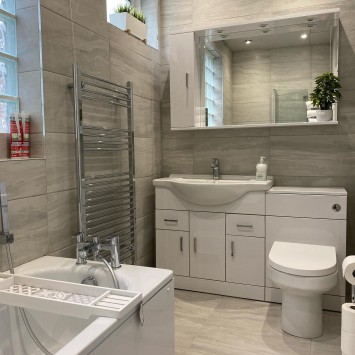Underfloor Heating: Embracing Comfort and Efficiency in Your Home
Introduction
Underfloor heating is a revolutionary technology that has been gaining popularity among homeowners due to its unmatched comfort and energy efficiency. Unlike traditional heating systems that rely on radiators or vents, underfloor heating operates by warming the floor itself, providing a consistent and pleasant heat distribution throughout the room. In this comprehensive article, we will explore the wonders of underfloor heating, its various types, installation process, benefits, and why it is an excellent choice to create a cozy and efficient living space for your home.
Understanding Underfloor Heating
Underfloor heating, as the name suggests, involves installing a heating system beneath the floor surface. It can be accomplished through two primary methods: electric underfloor heating and water-based underfloor heating (also known as hydronic heating).
1. Electric Underfloor Heating
Electric underfloor heating uses a series of electrical cables or heating mats installed below the floor. These heating elements warm up when an electrical current passes through them, radiating heat upward into the room. Electric underfloor heating is a popular choice for smaller areas and retrofitting projects due to its ease of installation and precise temperature control.
2. Water-based Underfloor Heating (Hydronic Heating)
Water-based underfloor heating operates by circulating warm water through a network of pipes installed beneath the floor. This system is connected to a central boiler or heat pump, which heats the water to the desired temperature. The heated water then transfers its warmth to the floor surface, creating a comfortable and uniform heat distribution. Hydronic heating is often preferred for larger areas and new construction projects.
Installation Process
The installation process of underfloor heating may vary depending on the type of system chosen and the existing flooring. However, the following steps generally outline the procedure:
- Assessment and Planning: A professional installer will assess your home's layout and determine the most suitable underfloor heating system based on your requirements and budget.
- Preparation: The installation area is prepared by ensuring the floor is clean, level, and free from any debris or obstacles.
- Insulation: Insulation boards are laid down to minimize heat loss and ensure optimal energy efficiency.
- Laying the Heating Elements: For electric underfloor heating, the heating cables or mats are carefully laid out and secured to the floor. For water-based systems, the network of pipes is installed in a carefully designed pattern.
- Floor Covering: Once the heating elements are in place, a layer of screed or self-leveling compound is applied to encase the electric cables or pipes. This creates a stable and even surface for the final floor covering.
- Thermostat and Controls: A user-friendly thermostat is installed to regulate the temperature and control the heating system efficiently. Many modern thermostats can be programmed to adapt to your lifestyle and save energy.
Benefits of Underfloor Heating
- Unmatched Comfort: Underfloor heating provides luxurious comfort, as the entire floor becomes a gentle and radiant heat source. Say goodbye to cold spots and hello to cozy toes all year round.
- Energy Efficiency: Underfloor heating is remarkably energy-efficient compared to traditional heating systems. The radiant heat warms the room more evenly, requiring lower temperatures to achieve the same comfort level, thereby reducing energy consumption.
- Space-saving and Aesthetically Pleasing: With underfloor heating, there is no need for unsightly radiators or vents, freeing up wall space and allowing more flexibility in interior design.
- Silent Operation: Unlike some heating systems that can be noisy, underfloor heating operates silently, creating a peaceful and serene living environment.
- Health and Hygiene: Underfloor heating helps reduce dust circulation, making it an ideal choice for those with allergies. Additionally, without the need for radiators, cleaning becomes easier and more efficient.
Why Choose Underfloor Heating for Your Home?
When it comes to creating a comfortable and energy-efficient living space, underfloor heating stands out as an excellent choice. Its ability to provide consistent warmth, energy savings, and aesthetic appeal make it a worthwhile investment for any homeowner. Whether you opt for electric underfloor heating or water-based hydronic heating, the benefits of underfloor heating will undoubtedly enhance the overall ambiance of your home.
Embrace the warmth and comfort of underfloor heating and experience a new level of coziness in your living space!
Underfloor Heating: Embracing Comfort and Efficiency in Your Home
Introduction
Underfloor heating is a revolutionary technology that has been gaining popularity among homeowners due to its unmatched comfort and energy efficiency. Unlike traditional heating systems that rely on radiators or vents, underfloor heating operates by warming the floor itself, providing a consistent and pleasant heat distribution throughout the room. In this comprehensive article, we will explore the wonders of underfloor heating, its various types, installation process, benefits, and why it is an excellent choice to create a cozy and efficient living space for your home.
Understanding Underfloor Heating
Underfloor heating, as the name suggests, involves installing a heating system beneath the floor surface. It can be accomplished through two primary methods: electric underfloor heating and water-based underfloor heating (also known as hydronic heating).
1. Electric Underfloor Heating
Electric underfloor heating uses a series of electrical cables or heating mats installed below the floor. These heating elements warm up when an electrical current passes through them, radiating heat upward into the room. Electric underfloor heating is a popular choice for smaller areas and retrofitting projects due to its ease of installation and precise temperature control.
2. Water-based Underfloor Heating (Hydronic Heating)
Water-based underfloor heating operates by circulating warm water through a network of pipes installed beneath the floor. This system is connected to a central boiler or heat pump, which heats the water to the desired temperature. The heated water then transfers its warmth to the floor surface, creating a comfortable and uniform heat distribution. Hydronic heating is often preferred for larger areas and new construction projects.
Installation Process
The installation process of underfloor heating may vary depending on the type of system chosen and the existing flooring. However, the following steps generally outline the procedure:
- Assessment and Planning: A professional installer will assess your home's layout and determine the most suitable underfloor heating system based on your requirements and budget.
- Preparation: The installation area is prepared by ensuring the floor is clean, level, and free from any debris or obstacles.
- Insulation: Insulation boards are laid down to minimize heat loss and ensure optimal energy efficiency.
- Laying the Heating Elements: For electric underfloor heating, the heating cables or mats are carefully laid out and secured to the floor. For water-based systems, the network of pipes is installed in a carefully designed pattern.
- Floor Covering: Once the heating elements are in place, a layer of screed or self-leveling compound is applied to encase the electric cables or pipes. This creates a stable and even surface for the final floor covering.
- Thermostat and Controls: A user-friendly thermostat is installed to regulate the temperature and control the heating system efficiently. Many modern thermostats can be programmed to adapt to your lifestyle and save energy.
Benefits of Underfloor Heating
- Unmatched Comfort: Underfloor heating provides luxurious comfort, as the entire floor becomes a gentle and radiant heat source. Say goodbye to cold spots and hello to cozy toes all year round.
- Energy Efficiency: Underfloor heating is remarkably energy-efficient compared to traditional heating systems. The radiant heat warms the room more evenly, requiring lower temperatures to achieve the same comfort level, thereby reducing energy consumption.
- Space-saving and Aesthetically Pleasing: With underfloor heating, there is no need for unsightly radiators or vents, freeing up wall space and allowing more flexibility in interior design.
- Silent Operation: Unlike some heating systems that can be noisy, underfloor heating operates silently, creating a peaceful and serene living environment.
- Health and Hygiene: Underfloor heating helps reduce dust circulation, making it an ideal choice for those with allergies. Additionally, without the need for radiators, cleaning becomes easier and more efficient.
Why Choose Underfloor Heating for Your Home?
When it comes to creating a comfortable and energy-efficient living space, underfloor heating stands out as an excellent choice. Its ability to provide consistent warmth, energy savings, and aesthetic appeal make it a worthwhile investment for any homeowner. Whether you opt for electric underfloor heating or water-based hydronic heating, the benefits of underfloor heating will undoubtedly enhance the overall ambiance of your home.
Embrace the warmth and comfort of underfloor heating and experience a new level of coziness in your living space!
Some of our previous work
Get a free estimate
Or call us- 07771881660
- 07876442995
- 07876442995



